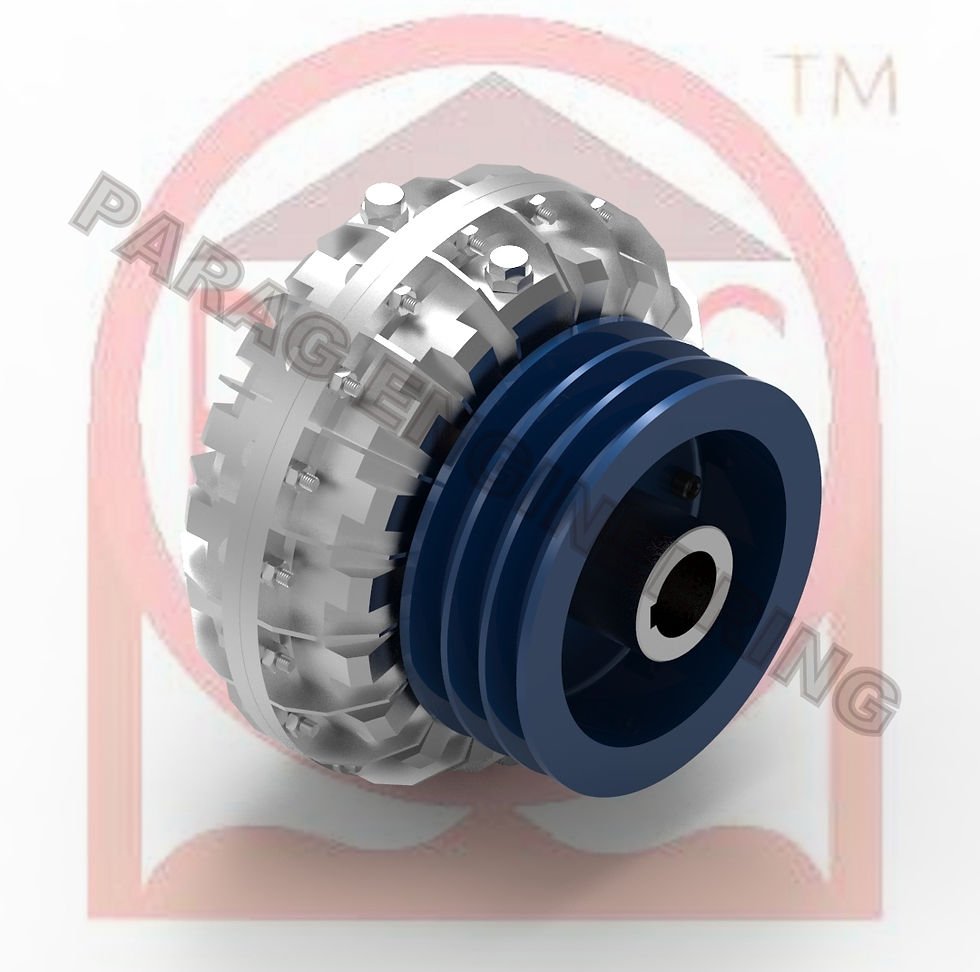Whirler make "PARAG" fluid coupling
- Whirler Centrifugals

- Jan 22
- 2 min read
The Gentle Giant: PARAG Fluid Couplings for Soft Starting Heavy Inertia
Heavy inertial loads, like those found in conveyor belts, crushers, and centrifuges, present a unique challenge during startup. The sheer inertia requires immense torque to get them moving, leading to high stress on motors, drives, and the entire power transmission system.1 This is where PARAG fluid couplings step in as a "gentle giant," providing a smooth, controlled start and protecting valuable equipment.
A PARAG fluid coupling operates on the principle of hydrodynamic power transfer.2 It consists of two bladed rotors, an impeller connected to the motor and a runner connected to the load, enclosed in a housing filled with transmission fluid. As the motor spins the impeller, it accelerates the fluid, which in turn imparts kinetic energy to the runner, gradually bringing the load up to speed.
This fluid-mediated power transfer offers several key advantages for soft starting:
Reduced Starting Current: By allowing the motor to accelerate unloaded, fluid couplings significantly reduce starting current, preventing voltage dips and potential damage to electrical components.
Smooth Acceleration: The gradual torque build-up ensures smooth, controlled acceleration, minimizing mechanical stress on the load, shaft, and associated components.3
Torque Limitation: Fluid couplings inherently limit the maximum transmissible torque, acting as a safeguard against overload conditions and preventing damage to the motor and driven equipment.4
Dampened Vibrations: The fluid medium effectively absorbs and dampens torsional vibrations, protecting the drivetrain from harmful shocks and oscillations.
PARAG, a renowned name in fluid coupling technology, offers a range of couplings specifically designed for heavy-duty applications. Their robust construction, advanced fluid dynamics, and precise control mechanisms ensure reliable and efficient soft starting for even the most demanding inertial loads.
In conclusion, PARAG fluid couplings provide an elegant solution to the challenges of starting heavy inertial loads. By ensuring a smooth, controlled start and limiting torque spikes, they enhance the lifespan of equipment, reduce energy consumption, and contribute to a more reliable and efficient operation.






Comments